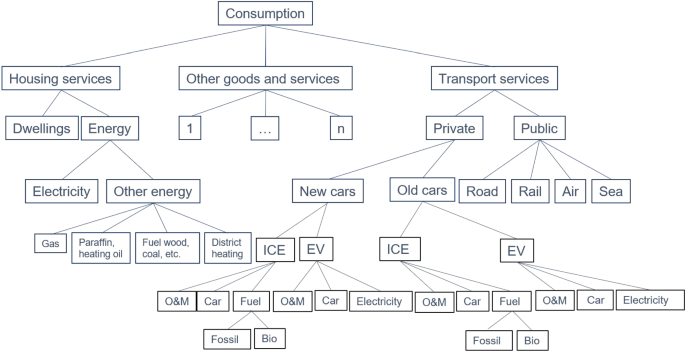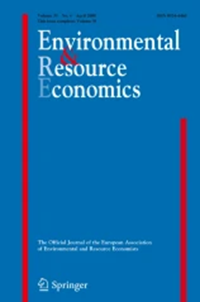通往低排放社会之路:相互作用的气候法规的成本
IF 3.4
3区 经济学
Q1 ECONOMICS
引用次数: 2
摘要
交通运输是温室气体排放的主要来源之一。交通运输方面的气候法规通常是特定部门法规和经济范围措施(如排放定价)的混合体。在本文中,我们考虑了不同的和部分重叠的气候法规如何相互作用,以及对经济福利、减排成本和排放的影响。我们的重点是挪威,这个国家对传统化石燃料汽车征收高额税收,为气候政策的另一个支柱——在私人交通中推广电动汽车——铺平了道路。我们对文学的贡献是双重的。首先,我们分析了交通运输领域部分重叠的气候法规的成本和影响——国内非ets排放上限和私人家庭所有新车的目标是电动汽车——重点关注2030年的结果。其次,我们通过在经济范围内的可计算一般均衡(CGE)气候政策方法的方法论发展,通过引入电动汽车技术作为私人家庭的明确交通设备选择,来回应文献中的空白。我们发现,以挪威为例,将特定的电动汽车目标与通过统一碳价格限制排放的政策相结合,将使福利成本增加一倍以上。本文章由计算机程序翻译,如有差异,请以英文原文为准。

The Road to a Low Emission Society: Costs of Interacting Climate Regulations
Abstract Transportation is one of the main contributors to greenhouse gas emissions. Climate regulations on transportation are often a mix of sector-specific regulations and economy-wide measures (such as emission pricing). In this paper we consider how different and partly overlapping climate regulations interact and what are the effects on economic welfare, abatement costs and emissions? Our focus is on Norway, a nation where high taxation of conventional fossil-fuelled cars has paved the floor for another pillar of climate policies: promotion of electric vehicles (EVs) in private transport. Our contribution to the literature is two-fold. First, we analyse the costs and impacts of the partly overlapping climate regulations in transportation—the cap on domestic non-ETS emissions and the goal of all new cars for private households being EVs—focussing on the outcome in 2030. Second, we respond to a gap in the literature through a methodological development in economy-wide computable general equilibrium (CGE) approaches for climate policy by introducing EV technologies as an explicit transport equipment choice for private households. We find that, for the case of Norway, combining a specific EV target with policy to cap emissions through a uniform carbon price more than doubles the welfare costs.
求助全文
通过发布文献求助,成功后即可免费获取论文全文。
去求助
来源期刊

Environmental & Resource Economics
Multiple-
CiteScore
10.20
自引率
3.40%
发文量
100
期刊介绍:
The primary concern of Environmental & Resource Economics (ERE) is the application of economic theory and methods to environmental issues and problems that require detailed analysis in order to improve management strategies. The contemporary environmental debate is in a constant state of flux and new or relatively unexplored topics are continually emerging. The Journal provides a forum for the further exploration of the causes, consequences and policy responses linked to these topics, across a range of spatial and temporal scales up to the global dimension. Contributions to the Journal should directly or indirectly be relevant to the policy formulation and application process. Areas of particular interest include: evaluation and development of instruments of environmental policy; cost-benefit and cost effectiveness analysis; sectoral environmental policy impact analysis; modelling and simulation; institutional arrangements; resource pricing and the valuation of environmental goods; environmental quality indicators. The editors wish to encourage a pluralistic approach to both theoretical and applied contributions. The publication of empirically based, policy-oriented research is given a high priority in the Journal in order to further critical discussion. Environmental & Resource Economics will also accept papers with an interdisciplinary approach, where this helps to improve knowledge of the real world complexities present, provided that the analysis retains links to or components of economic thinking. The Journal is required reading for economists, economic geographers and other academics, professionals and officials with a working interest in environmental matters.
 求助内容:
求助内容: 应助结果提醒方式:
应助结果提醒方式:


